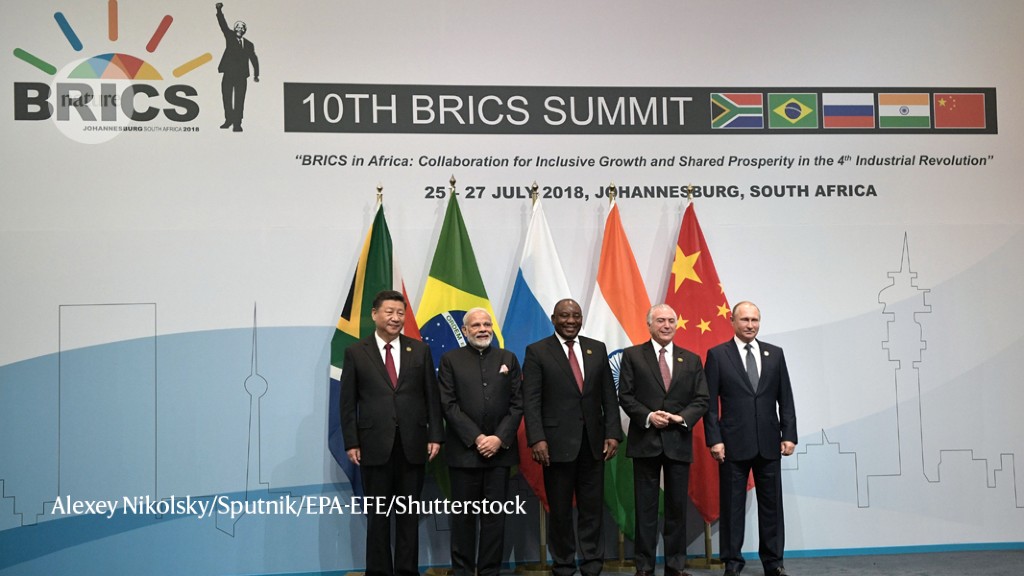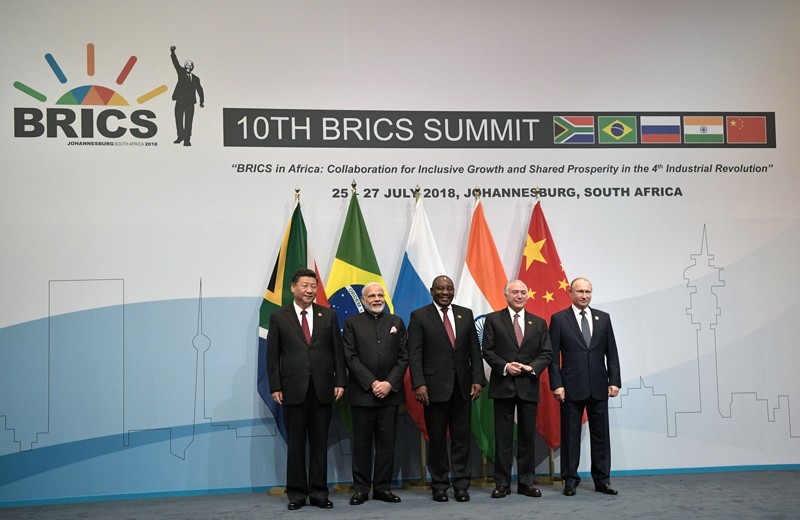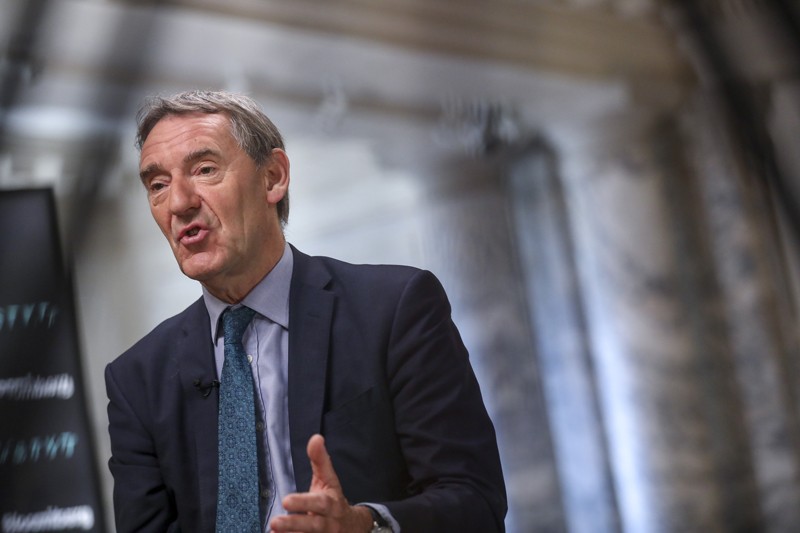It’s 20 years since economist Jim O’Neil coined the term BRIC to describe Brazil, Russia, India and China. O’Neill, who was head of economics research at the investment bank Goldman Sachs, wrote in an internal policy paper that the four countries were growing faster than the G7 group of large economies (see go.nature.com/3pgtqsd). World policymaking clubs such as the G7 are usually dominated by the United States and Europe. They should invite BRIC representatives, O’Neill advised. The balance of world economic power was tilting and the big institutions of global governance needed to reflect that, he argued.
In one sense, O’Neill’s forecast was not new. Since at least the 1950s, economists, notably including Walt Whitman Rostow at the Massachusetts Institute of Technology in Cambridge, had been anticipating that China and India would become economic powers — as they were in pre-industrial times. But what happened next was unprecedented. As a result of O’Neill’s analysis, the leaders of the four countries created an intergovernmental organization designed to strengthen the bonds between the nations, with a key focus on boosting research cooperation. They named it BRICS (South Africa joined in 2010).
This year has been a busy one in the BRICS research calendar. India, which holds the rotating chair, organized more than 100 events. These included meetings of astronomers and energy and health researchers, as well as of medical researchers and practitioners.
The year also saw meetings between BRICS agriculture, health and space officials. Last week, the BRICS science ministers ended talks in New Delhi with a plan to connect younger innovators and start-up companies across the five countries, and to set up a centre to facilitate technology transfer. This is in addition to 13 BRICS science working groups that collaborate on fields including polar and ocean technology, astronomy, climate and energy, photonics and biotechnology. There is also a BRICS-wide network of more than 50 universities.
These collaborations are all about creating knowledge and innovation in fields in which an individual country might struggle to act alone, sharing data and recognizing that each country brings different strengths. The astronomy working group, for example, is researching the feasibility of having a network of ground-based telescopes in each country. BRICS space agencies are planning to share remote-sensing data on climate and natural disasters. A group working on climate and energy brings Brazil’s expertise on Amazonian weather and climate together with China’s researchers in photovoltaic energy systems. Meeting the United Nations Sustainable Development Goals is a running theme in BRICS science cooperation.
However, there’s one noticeable gap. The BRICS countries account for almost half of global tuberculosis (TB) cases, and the world’s largest number of cases of multi-drug-resistant TB. Intra-BRICS TB research would be an obvious priority, except that it isn’t. There is a BRICS TB research network, and in August it announced a pioneering genomic-surveillance network to study the intersection of TB and COVID-19. But this is an area where funding and collaboration could be at much higher levels.
Conflicts of interest
There is a larger omission that must also be addressed. O’Neill’s 2001 call to include BRICS nations at the top policymaking tables went largely unheeded. For a short period, it seemed that the G20 group of the world’s largest economies (which includes the BRICS nations) would work together on global challenges, such as ending the pandemic. But this has not happened. And it has not gone unnoticed.
In an article for this year’s BRICS meetings, researchers Sachin Chaturvedi and Sabyasachi Saha at the think tank Research and Information System for Developing Countries in New Delhi, argue that organizations such as the UN have been unable to defend the interests of the poorest nations and those with the least power. The failure to provide vaccines quickly for LMICs is a case in point. It’s no coincidence that India and South Africa are leading an alliance of more than 100 nations asking for intellectual-property protections to be waived during the pandemic so that drugs and vaccines can reach LMICs more quickly.
Similarly, China and India were united in warning November’s COP26 climate meeting in Glasgow, UK, that future commitments to decarbonize cannot be made at the expense of denying fossil fuels to communities with no access to electricity. Clearly, LMICs are losing trust in the UN-led system of global governance because, as they see things, higher-income countries are shooting down their ideas, or ignoring their perspectives. And that should concern us all.
It’s essential that LMICs work together towards shared goals and collaborate to build their research infrastructure. But at the same time, it is crucial that existing global-cooperation forums — such as the G7, the World Trade Organization and the World Health Organization — regard the BRICS nations and all other LMICs as equals.
If there were a prize for policy analysis that has had world-changing influence, O’Neill’s article would be the standout candidate. But the true test of its success is whether the existing powers will heed O’Neill’s advice. For global governance to be credible, those who control the levers of power must learn to see LMICs as partners, not as aid recipients.









More News
Author Correction: Stepwise activation of a metabotropic glutamate receptor – Nature
Changing rainforest to plantations shifts tropical food webs
Streamlined skull helps foxes take a nosedive